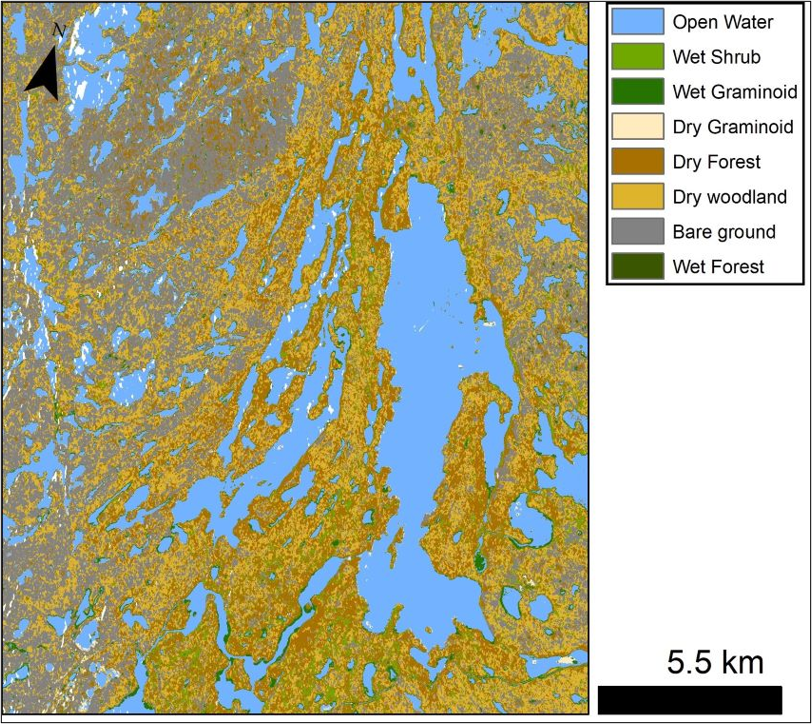The ORNL DAAC recently released a new Arctic-Boreal Vulnerability Experiment (ABoVE) dataset by Kyzivat, E.D., et al. (2021):
ABoVE: Lake and Wetland Classification from L-band SAR, Alaska and Canada, 2017-2019
This dataset contains a high-resolution land cover classification focused on water and wetland vegetation classes over three NASA ABoVE Campaign regions: Yukon Flats, Alaska, USA; the Peace-Athabasca Delta, Alberta; and the Canadian Shield, Northwest Territories (NWT), Canada. The product was derived from L-band synthetic aperture radar (SAR) acquisitions from the airborne NASA UAVSAR instrument in 2017-2019. The classification was trained and validated from field visits, UAV images, satellite imagery as well as other ABoVE datasets. Classifications in all regions are provided as both preliminary 13-class versions and final, simplified 5-class versions. Training and test data used for the classifier are also included as well as characteristics of lakes in the study area. This land cover classification was developed to support a project focusing on potential methane emissions from the shallow near-shore, or littoral, regions of lakes.
The ABoVE is a NASA Terrestrial Ecology Program field campaign being conducted in Alaska and western Canada, for 8 to 10 years, starting in 2015. Research for ABoVE links field-based, process-level studies with geospatial data products derived from airborne and satellite sensors, providing a foundation for improving the analysis, and modeling capabilities needed to understand and predict ecosystem responses to, and societal implications of, climate change in the Arctic and Boreal regions.
Additional data from ABoVE and other relevant links can be found on the ORNL DAAC's ABoVE Project Page.
Citation: Kyzivat, E.D., L.C. Smith, C. Huang, C. Wang, T. Langhorst, J.V. Fayne, M.E. Harlan, Y. Ishitsuka, D. Feng, L.H. Pitcher, and T.M. Pavelsky. 2021. ABoVE: Lake and Wetland Classification from L-band SAR, Alaska and Canada, 2017-2019. ORNL DAAC, Oak Ridge, Tennessee, USA. https://doi.org/10.3334/ORNLDAAC/1883

